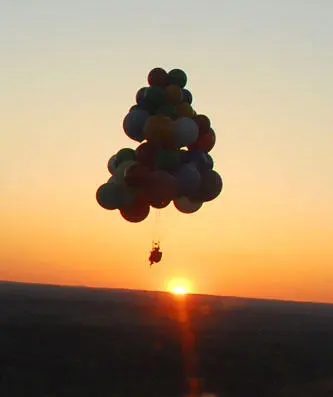It is often forgotten that in the same Book VIII of Ovid’s poem, Daedalus also has a twelve-year-old nephew (the son of his sister) called Perdix. Perdix is a brilliant and precocious child inventor, loved by all in Crete. But Daedalus, in a crazed fit of grief and jealousy after the death of Icarus, hurls Perdix ‘headlong down from the sacred hill of Minerva’. Yet unlike Icarus, Perdix does not crash to earth and die. Instead, he takes to the air and flies with divine aid: ‘Pallas Athene, the goddess who fosters all talent in art and craft, caught him and turned him, still in mid-air, to a fluttering bird and covered his body with feathers, so the strength of his quick intelligence sprang into his wings and feet.’ He becomes Perdix, the partridge ( perdrix in French), a child who has indeed learned to fly successfully – although unlike Icarus he always remains close to the ground, ‘and does not build his nest in mountain crags’. 1
What may happen while actually aloft is equally mysterious. Balloons have always given a remarkable bird’s-eye or angel’s-eye view of the world. They are unusual instruments of contemplation, and even speculation. They provide unexpected visions of the earth beneath. To the earliest aeronauts they displayed great natural features like rivers, mountains, forests, lakes, waterfalls, and even polar regions, in an utterly new light. But they also showed human features: the growth of the new industrial cities, the speed and violence of modern warfare, or the expansion of imperial exploration.
Long before the arrival of the aeroplane in the twentieth century, balloons gave the first physical glimpse of a planetary overview. Balloons contributed to the sciences and the arts that first suggested that we are all guests aboard a unified, living world. The nature of the upper air, the forecasting of weather, the evolutions of geology, the development of international communications, the power of propaganda, the creations of science fiction, even the development of extra-terrestrial travel itself, are an integral part of balloon history.
But there are also stranger, existential elements, far less easy to define. The mental release, the physical heart-lift, the calm perilous delight of ballooning – an early aeronaut described it as ‘hilarity’ – is an absolute revelation, but one not easily or convincingly described. I have tried to capture its spirit indirectly, by tying together this cluster of true balloon stories and colourful tales, from the vast ‘history and lore of aerostation’, in the hope that they will bear us aloft for a little while.
While airborne, they may also provide a new perspective. The vulnerable globe of balloon fabric is itself symbolically related to the vulnerable globe of the whole earth. There is some haunting analogy between the silken skin of a balloon, the thin ‘onion skin’ of safety, and the thin atmospheric skin of our whole, beautiful planet as it floats in space. This thin breathable layer of air is not much more than seven miles thick – as balloonists were the first to discover. In every way, balloons make you catch your breath.
Falling upwards by helium party balloon may sound unlikely. But on Sunday, 20 April 2008 a forty-one-year-old Catholic priest, Father Adelir Antonio de Carli, made a heroic ascent using a very similar method. Father de Carli was known locally as Padre Baloneiro – ‘The Balloon Priest’ – and he flew for charity. He took off from the port city of Paranaguá, in Brazil, strapped into a buoyancy chair suspended beneath a thousand small multicoloured helium balloons. They were grouped into five vivid clusters of pink, green, red, white and yellow. His aim was to raise money for a truckers’ rest stop and spiritual centre. He was known for his human rights campaigns, and that January had made a successful four-hour charity ascent suspended beneath six hundred helium party balloons.
On this second flight, armed with a thermal flying suit, GPS system and satellite phone, he rose successfully to some nineteen thousand feet, near to the edge of the sustainable atmosphere, where the sky becomes dark blue, and human breath forms glittering ice crystals in the ever-thinning air. Here, close to heaven, he cheerfully reported back by phone to his flight control. He also gave a phone interview to the Brazilian TV channel Globo, in which he said he was ‘fine, but very cold’, and was having trouble operating his GPS device. But he was also being carried out to sea, and was now thirty miles off the coast. At 8.45 that Sunday evening, he lost contact with the coastguards. An air-sea rescue search was mounted early the following Monday morning, but without success. A surviving cluster of fifty balloons was found floating in the sea late on Tuesday, but without Padre Baloneiro attached. The Brazilian naval search was called off on 29 April. But his parishioners continued to believe in his miraculous survival, and prayed daily for him.

Three months later, on 4 July 2008, an oil-rig support vessel found the remains of his body (lower torso and legs only) floating about sixty miles off the Brazilian coast, still attached to his buoyancy chair. It seems that part of the helium balloon rig must have separated or failed in some way during the first twenty-four hours of his flight. Possibly some of the balloons began bursting at high altitude, but this of course would have automatically reduced his lift, much as planned, and brought him back comparatively gently to earth. Except that now there was no earth beneath him. It seems that Padre Baloneiro must have spent some time meditating in the sea. Finally, he was probably eaten by sharks. But he was a brave man, a daring balloonist, and possibly even a saint. fn1
The dash and eccentricity of so many of those who have flown balloons since the first Montgolfiers of 1783 is strangely mesmerising. I find it difficult not to admire such figures as Sophie Blanchard, Charles Green, Félix Nadar, James Glaisher, Thaddeus Lowe, Gaston Tissandier or Salomon Andrée. Indeed, I find it difficult not to fall for them. The word ‘intrepid’ is automatically used of balloonists; but almost always thoughtlessly. In my experience, balloonists come in every shape and personality type: meticulous, cautious, reckless, obsessive, sportive, saturnine, or devil-may-care. Equally they seem to have every kind of motivation: professional, commercial, scientific, philanthropic, escapist, aesthetic, or just plain publicity-seeking.
But the one thing they never quite seem to be is down-to-earth. All of them seem to have one enigmatic thing in common, besides physical courage and a head for heights. This is a romantic dream of flying, a strange – an almost unnatural – longing to be airborne. There is something both exotic and magnetic about such people. A biographer is drawn to their enigma.
The balloons themselves are mysterious, paradoxical objects. They are both beautiful and ephemeral. They are a mixture of power and fragility in constant flux. They offer a provoking combination of tranquillity and peril; of control and helplessness; of technology and terror. They make demands.
Consider an earlier balloon flight for charity, which took place on the afternoon of 22 July 1785, when a full-size hydrogen balloon was seen flying at three thousand feet over the Norfolk fishing village of Lowestoft. (Indeed, very close to my village fête.) The balloon was heading rapidly eastwards, directly out over the North Sea, and its pilot was clearly unable to bring it back to earth. There was nothing between the balloon and the distant shores of the Baltic.
Читать дальше













